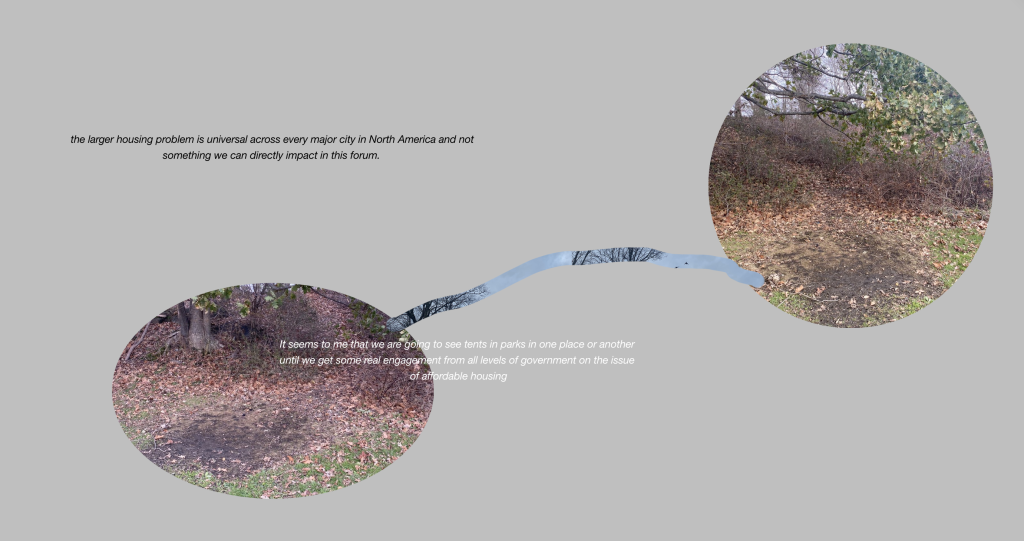Dr. Nicole Lee’s course MAED 6370 Community and Art Education: History, Theory, and Practice asks students in the Master of Art in Art Education (MAAE) program to investigate how community and art education can be brought together through collaboration, experimentation, and social engagement. MAED 6370 is a course in the ‘Community Based Practice’ stream of the MAAE program.
Lee is an a/r/tographer (artist/researcher/teacher-educator) and curriculum studies scholar who joined NSCAD in 2022 as Assistant Professor of Art Education in the Division of Art History and Contemporary Culture. Her approach to teaching reflects a/r/tographic commitments toward art, research, and pedagogy. Particularly important to her are notions of collaboration, community, collectivity, and relationality.
“Many of the MAAE students are new to Halifax—I am, too—and a number of them have been living here for a long time,” Lee says, “which quickly brings the question of ‘how can we live well together?’ to the forefront of discussion.”
Lee employs Cristina Grasseni’s research-based approach to community mapping in the course. It is a methodology in visual anthropology that spans geographical and digital-media practice.
“Community mapping allows individuals to visualize relational and social data so relationships between people, places, and things can be articulated and represented,” Lee explains. The class was supported by readings in community-based art education, communities of a/r/tographic practice and collaboration, community-based participatory research, ethics, and art education.
This allows individuals to visualize relational and social data so relationships between people, places, and things can be articulated and represented, she explains. The class was supported by readings in community-based art education, communities of a/r/tographic practice and collaboration, community-based participatory research, ethics, and art education.
“Mapping practices have strong ties with colonialism,” Lee notices.” “It is easy to reject them completely, but perhaps what is profoundly needed is the reclamation of ‘mapping’ so that representations of place can reflect the fullness of the presences who live and thrive there, in the past as well as in the present—the arts can help us here.”
Each student started their projects on foot. They walked, developed a project on how they conceptualized community, and made a creative map of their community. In doing this work, they were asked to consider who and what were included or excluded and to deliberate on their intentions for these choices.
“In this way, community art education can be an area of collaboration, play, experimentation, and social engagement that opens opportunities for students to discuss larger issues of democracy, equity, anti-racism, and decolonization through personal lenses,” Lee says.
“I’m amazed with the kinds of artful inquiries that students took up. Each person sees the world and conceptualizes ‘community’ so uniquely, and it was remarkable to come together to learn and unlearn what ‘community’ might mean for different people in different contexts.”
Signy Holm: observing a public park in her neighbourhood
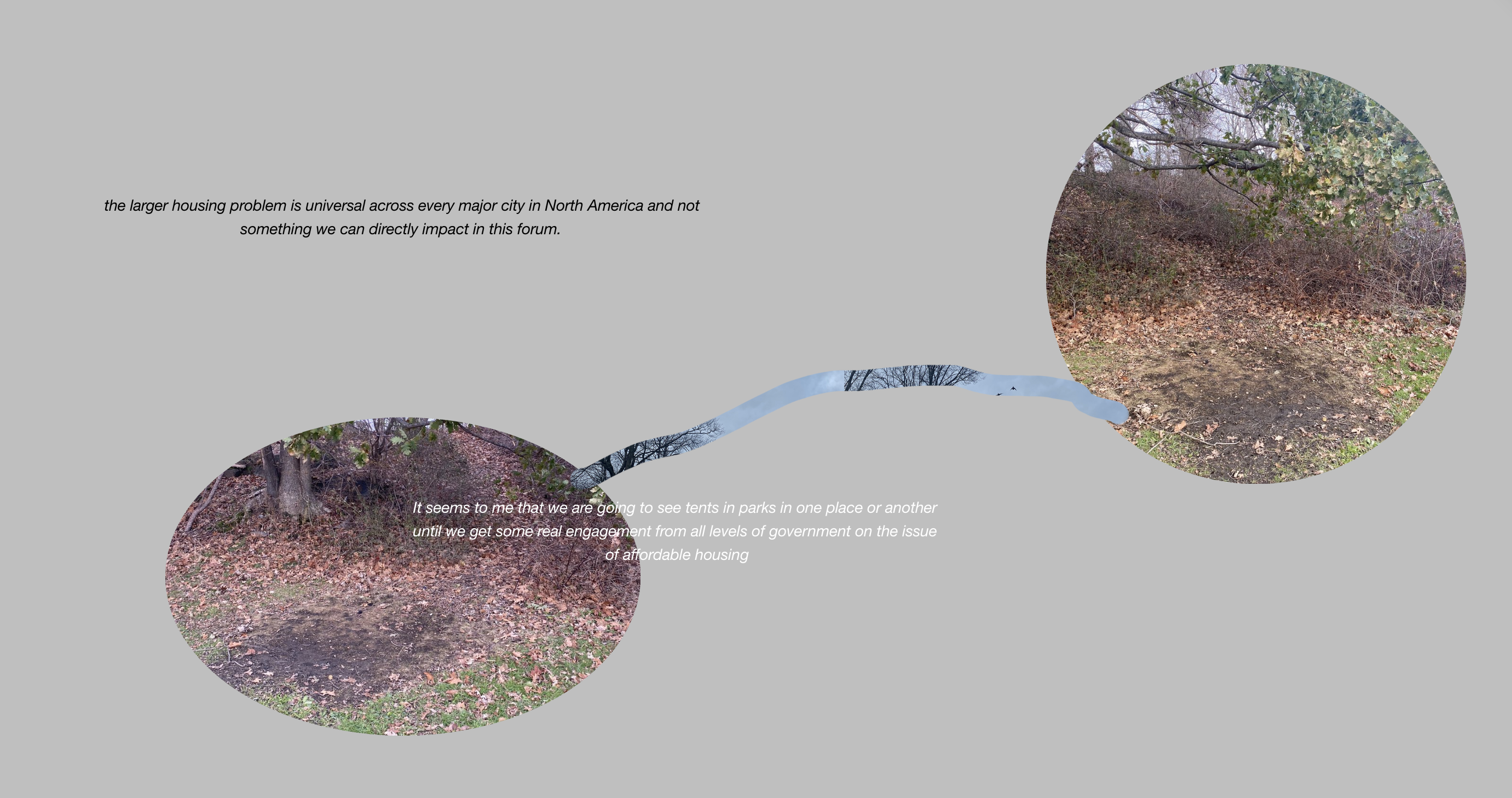
“Through my own navigation of this park, I came to see that community doesn’t always mean belonging, and we have much work to do when it comes to ensuring that all of our neighbours, both housed and unhoused, humans and more-than-human, can thrive within our communities.”
“For this Community Mapping project, I chose to create a website to document my experiences and observations within a local Halifax park, which is one of several sites that the HRM has approved as a designated encampment site for those sleeping rough. I titled the website (and subsequent essay) What’s in a Park, which essentially contains fragmented images, digital collages, and text excerpts that the viewer can navigate freely. The images and collages contain photographs that I took on my many walks throughout this park, and the text fragments were pulled (anonymously) from a public community Facebook group, where many community members had been expressing and discussing their shared unease when it came to the encampment. Part of my goal when “mapping” Flinn Park was to know more about how the housed community members felt about the encampment while attempting to also humanize those residing within it without directly invading their personal space or speaking “for” them.”
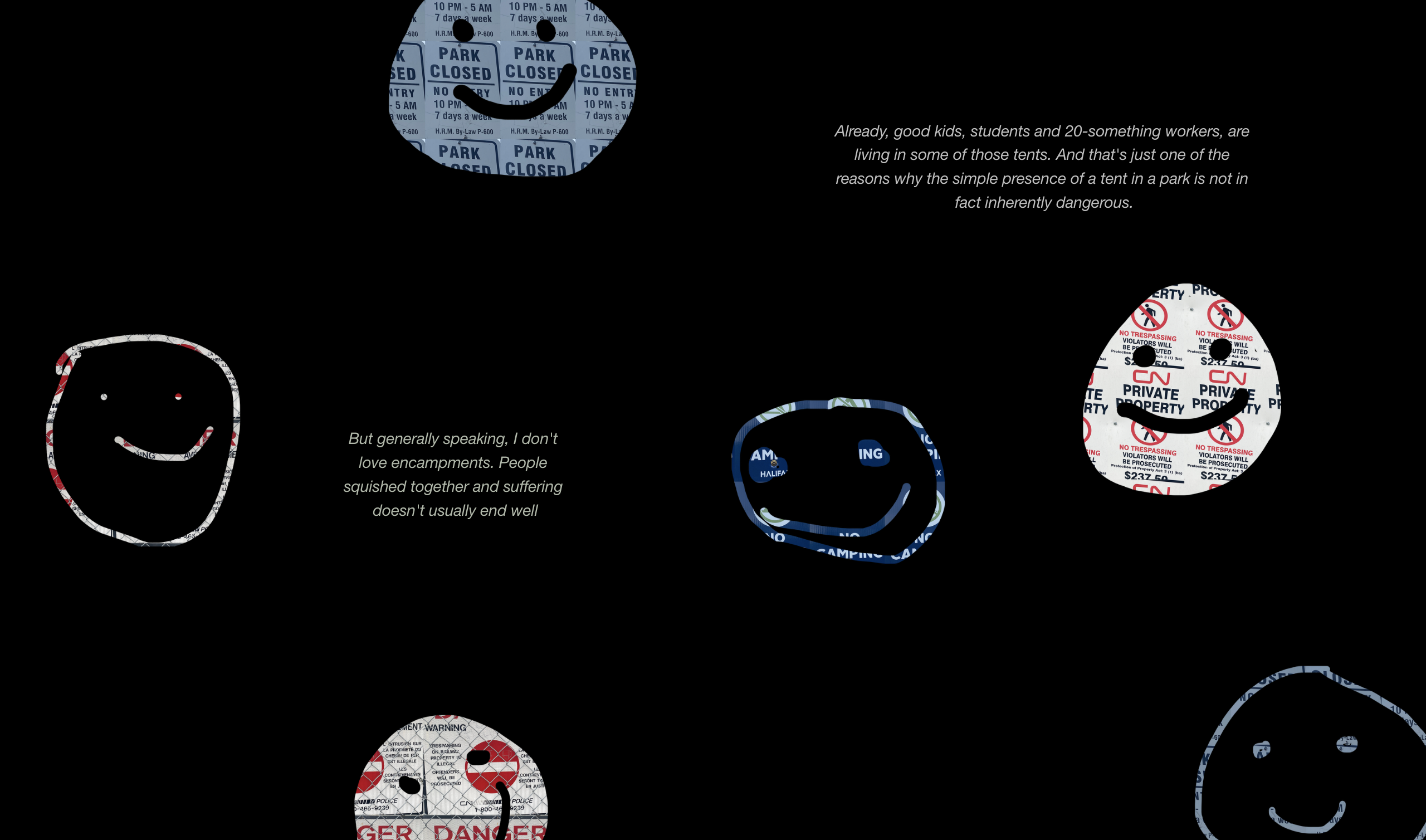
“The ways in which I chose to convey the images and text excerpts on my website were largely based on the idea of fragmentation and distortion. Through digitally manipulating images of objects and landscapes of the park, and pulling from specific parts of the text, I am attempting to convey not just an alternative perspective on the situation, but to also convey the messiness of it. I walked the park every few days, often taking the time to observe small details for long stretches of time, and using my phone camera to document these walks.”
Meghan Macdonald: finding community in creative practices
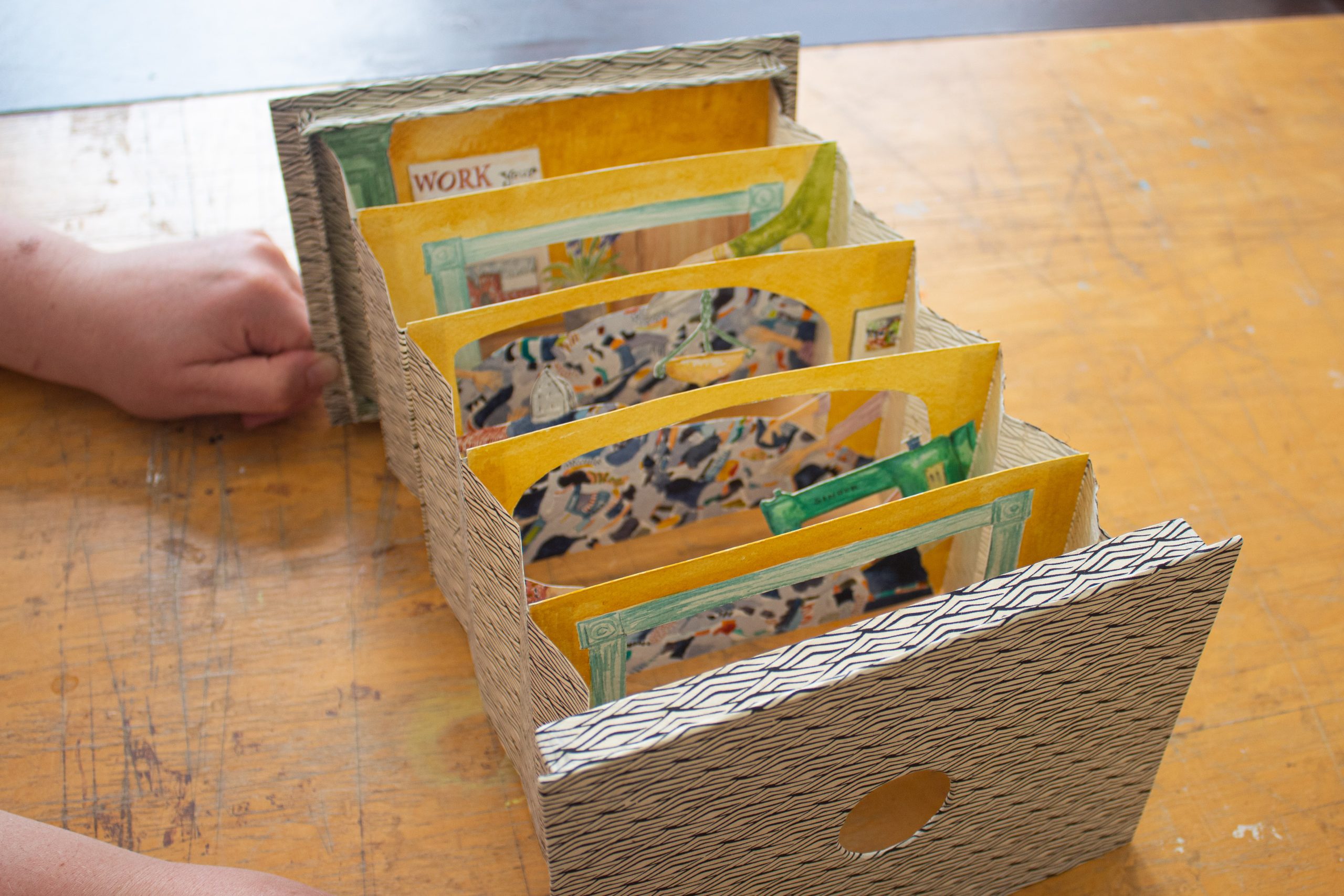
“Learning about a/r/tographic research was exciting, as it framed academically a way to write from the perspective of an artist/researcher/teacher. It helped me see how the nuance that I may endeavour to explore in my art practice could translate to my writing and research too.”
“My project centered on a community of practice, the memorial quilt and a/r/tographic research. I wrote about the act of making a quilt using my mother’s clothing after she died. Her friends rallied around her during her illness, helping her to complete projects that she had intended to make for her three children – a quilt for each of us. After she died, these friends, coined the Wonky Women, helped my sisters and I make a memorial quilt with our mom’s clothing.”
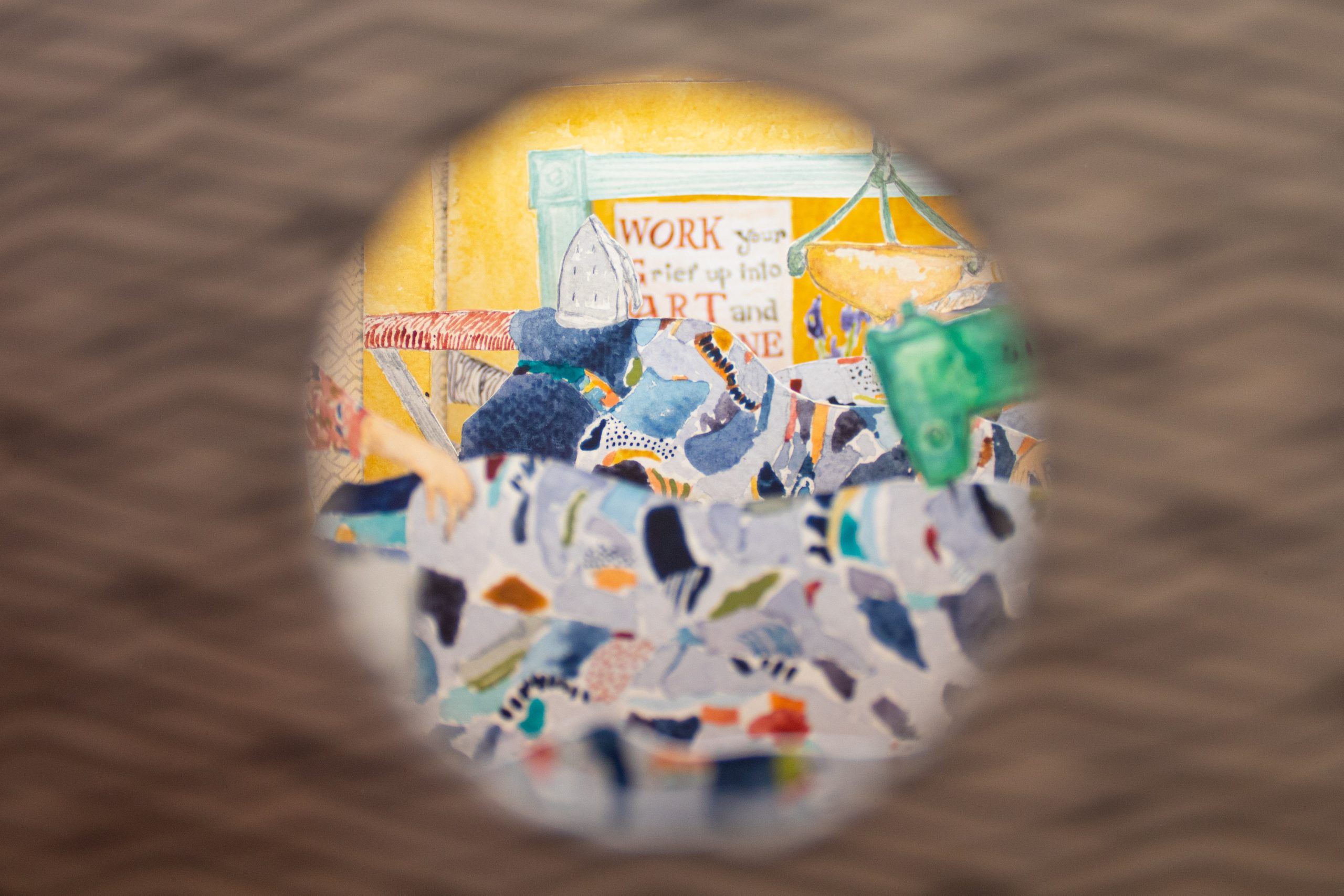
“I created a peepshow object as part of the project. Held in hand and expanded, the viewer peers through a viewfinder to observe a scene of the memorial quilt being made. It is in this in-between, somewhere in the expansion and contraction of the bellows, and in the ruptures and openings that I find community and a sense of home.”
Lisa MacPherson: mapping the neighbourhood she lives in
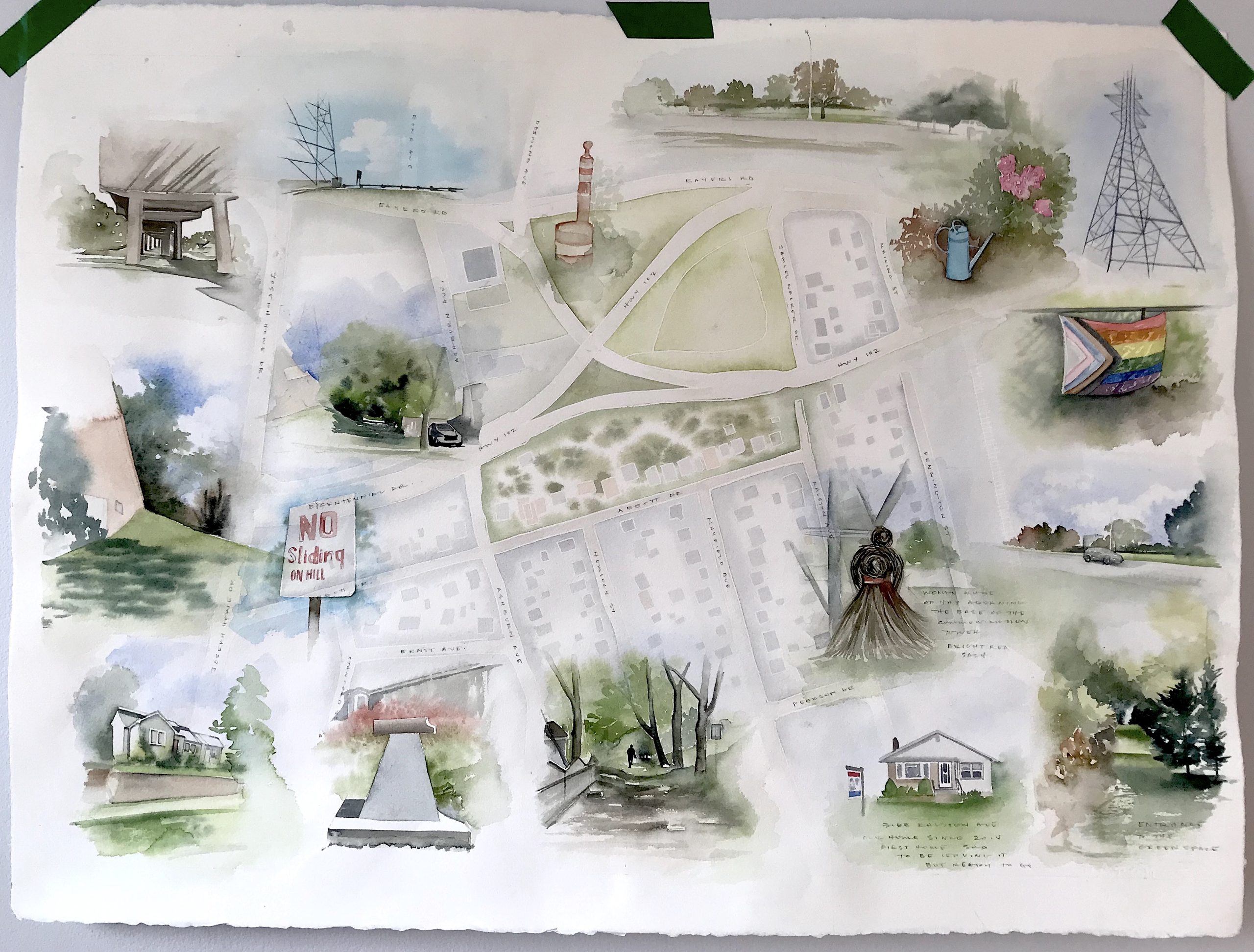
“I wanted to incorporate specific visual details of this place into the map. My decision to use watercolour comes from the fact that it is the medium I am most comfortable with using currently, and I wanted the challenge of creating this complex composition with it.”
“In addition to the map-making, I continued this inquiry by taking photos each time I walked the familiar stretch of green space, most often with one awkward hand—the other gripping my dog’s leash. While following the well-trodden path, I used the camera on my phone as a complement to mindful walking. Through this lens, I explored the nuances of textures, reflections, and objects, which compelled me. As the collection of photos started to grow, I began to organize them, choosing which to include or discard, returning to the space to re-photograph particular points of interest from better viewpoints.”
“The resulting artwork is a collection of illustrated vignettes surrounding and layered upon a map of this particular area. The painted images visually describe my impressions of specific sites and objects that live inside or just on the peripherals of the green space. My intention was to create a feeling through the painted imagery reminiscent of naturalist field guides and botanical illustrations.”

